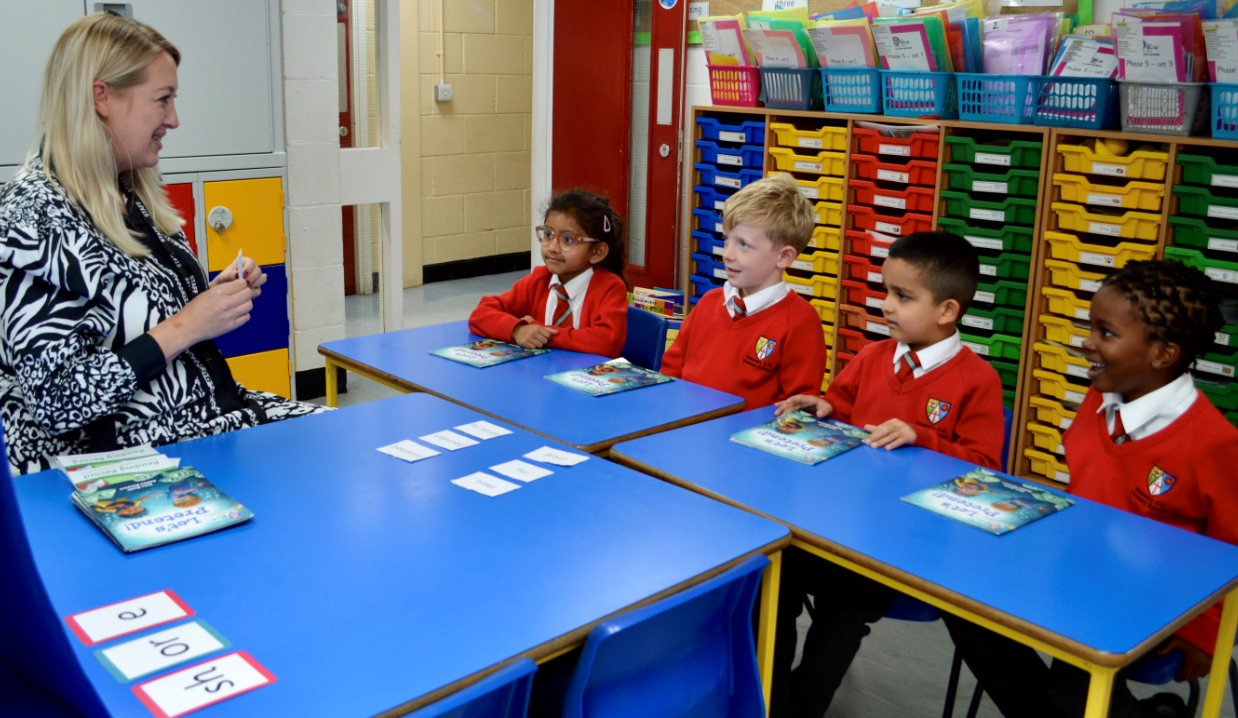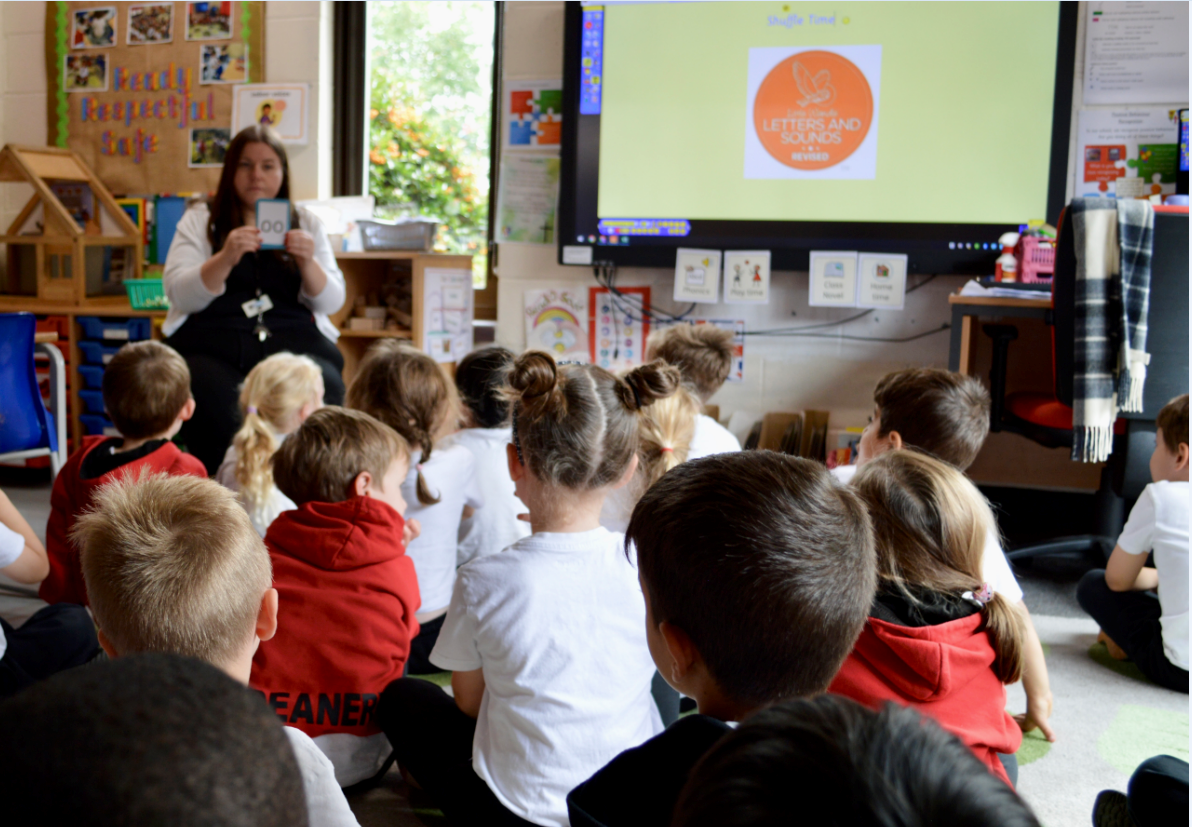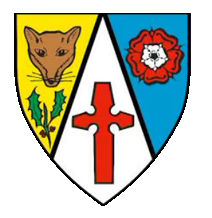English including Phonics Early Reading
The English curriculum is made up of many strands: reading, writing, spelling, punctuation, grammar, handwriting, speaking & listening. Teachers plan from the National Curriculum, promote a love of reading and deliver high-quality input to embed the key skills within English.
We understand that the reading and writing of Standard English, alongside proficient language development, is the key to unlocking the rest of the academic curriculum. 85% of the curriculum requires children to be able to read in order to access the learning. With this in mind, we put great emphasis and investment into the teaching of early reading.
At Deanery CE Primary School, reading is at the heart of our learning. We know that a love of reading is the biggest indicator of future academic success and believe that one of the most important gifts we can give a child is the power to read and share books. When a child learns to read, a new world opens up and children move quickly from learning to read to reading to learn.
Phonics and Early Reading
Phonics and early reading are the foundation for lifelong learning and wisdom. By equipping children with the skills to decode and understand text, we open doors to rich vocabulary and meaningful communication. Through structured phonics teaching and reading sessions, pupils gain confidence in oracy, expressing ideas clearly and listening attentively, while vocabulary instruction deepens comprehension and nurtures curiosity. Through rich oracy opportunities, children are encouraged to share their thoughts aloud, discuss stories, and engage with text in meaningful ways, strengthening their speaking and listening skills. Exploring vocabulary, explicitly teaching and introducing new words to our children further enriches this process, expanding their language and enabling them to express themselves more fully, both in writing and conversation. This journey is not only about academic achievement, but also about connecting with the community, whether through shared reading experiences, family involvement, or discussions with peers and teachers. Additionally, spirituality can be woven into early reading by incorporating stories with moral or ethical lessons, nurturing a sense of wonder, reflection, shared experiences and personal growth. These elements create an environment where children can flourish not only as readers, but as wise, compassionate individuals.
There are resources to support parents here: https://www.littlewandle.org.uk/resources/for-parents/
See attachments below for further details.


Key Stage 2
Each year group has a 45 minute whole class reading lesson three times a week and study three linked texts within a week which may be linked by genre, author and theme. Each ses-sion consists of around 15 minutes of the children reading and then 30 minutes of discussion and tasks. During these sessions, we cover a breadth of texts - fiction, non-fiction, poetry, songs and picture books and focus on the VIPERS reading skills - vocabulary, inference, prediction, explanation, retrieval, summarising and sequencing.
All children should have the opportunity to read to the teacher across these sessions.
Children begin with a short retrieval quiz (quick start) that shouldn’t require much, if any, look-ing back over the text. After this, any unfamiliar or potentially limiting vocabulary is explored and read around for a few minutes. This is accompanied with pictures/visuals where possible for a deeper understanding. Deeper questions or activities are then presented one at a time. In the form of individual thinking, partnered talk and solo work.
It is important that we still hear our KS2 children read and take opportunities to discuss their texts in order to develop their higher-level reading and comprehension skills. Children in KS2 should be reading for approximately 20 minutes each night. This may be reading to an adult, with an adult or independently. We would also encourage children to discuss the book, predict future events in order to develop their skills of inference and deduction. Children should read their own reading book 3 times per week, 1 topic related text per week and 1 other text e.g. current affairs, recipe, text of parents’ choice.
Grammar
Primary school children are now introduced to fairly complicated grammatical concepts in their primary-school learning journey and are expected to work to much higher standards when it comes to grammar and punctuation; they are expected to identify parts of speech and write confidently using tricky grammatical concepts.
They are also expected to know and use grammatical terminology which has been updated to be in line with traditional grammatical vocabulary (Connectives are now divided into conjunctions, prepositions and adverbs; definite and indefinite articles are now classed as determiners).
We teach our children grammar in context within writing and prepare children for writing by modelling the ideas, grammar or techniques of writing.
Spelling
An essential trait of literate people is being able to spell effectively and spelling is valued in society above all other writing conventions (Turnbill, 2000). We want to develop spelling ’stickability’, and therefore teach dedicated spelling lessons from Y2 to Y6 which continue to use and build on our strong phonic foundations, look for patterns and rules and apply them to our independent writing.
